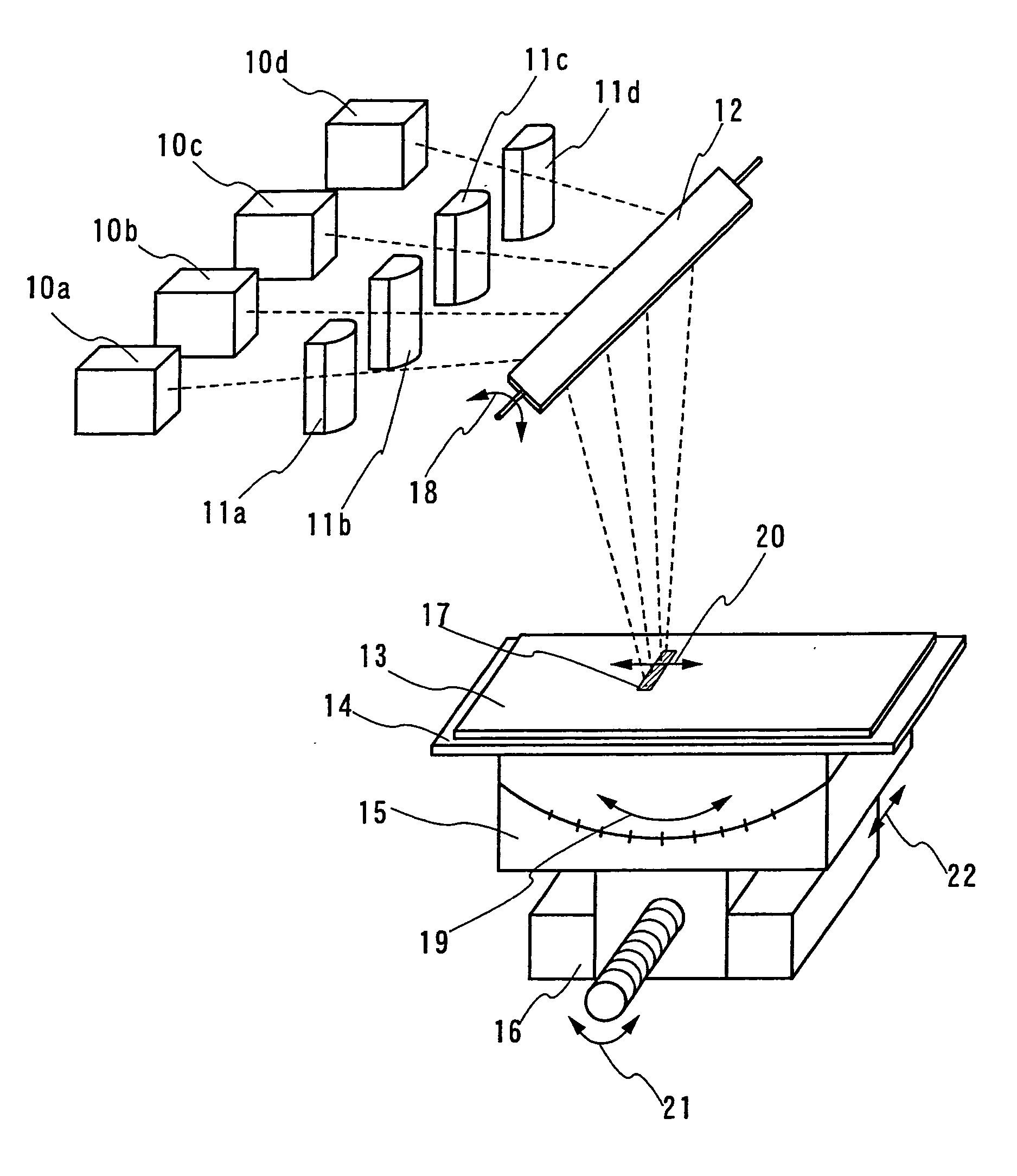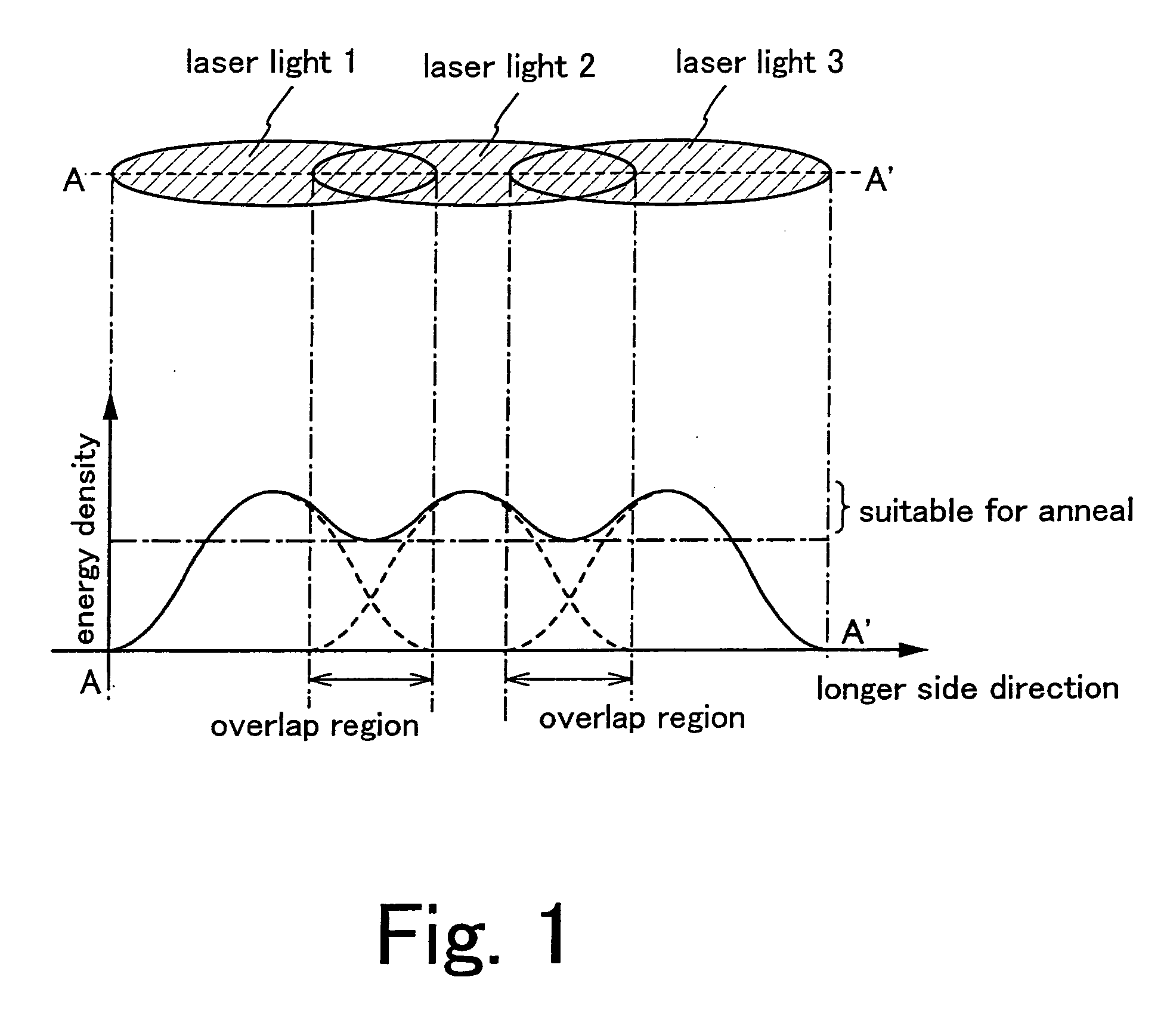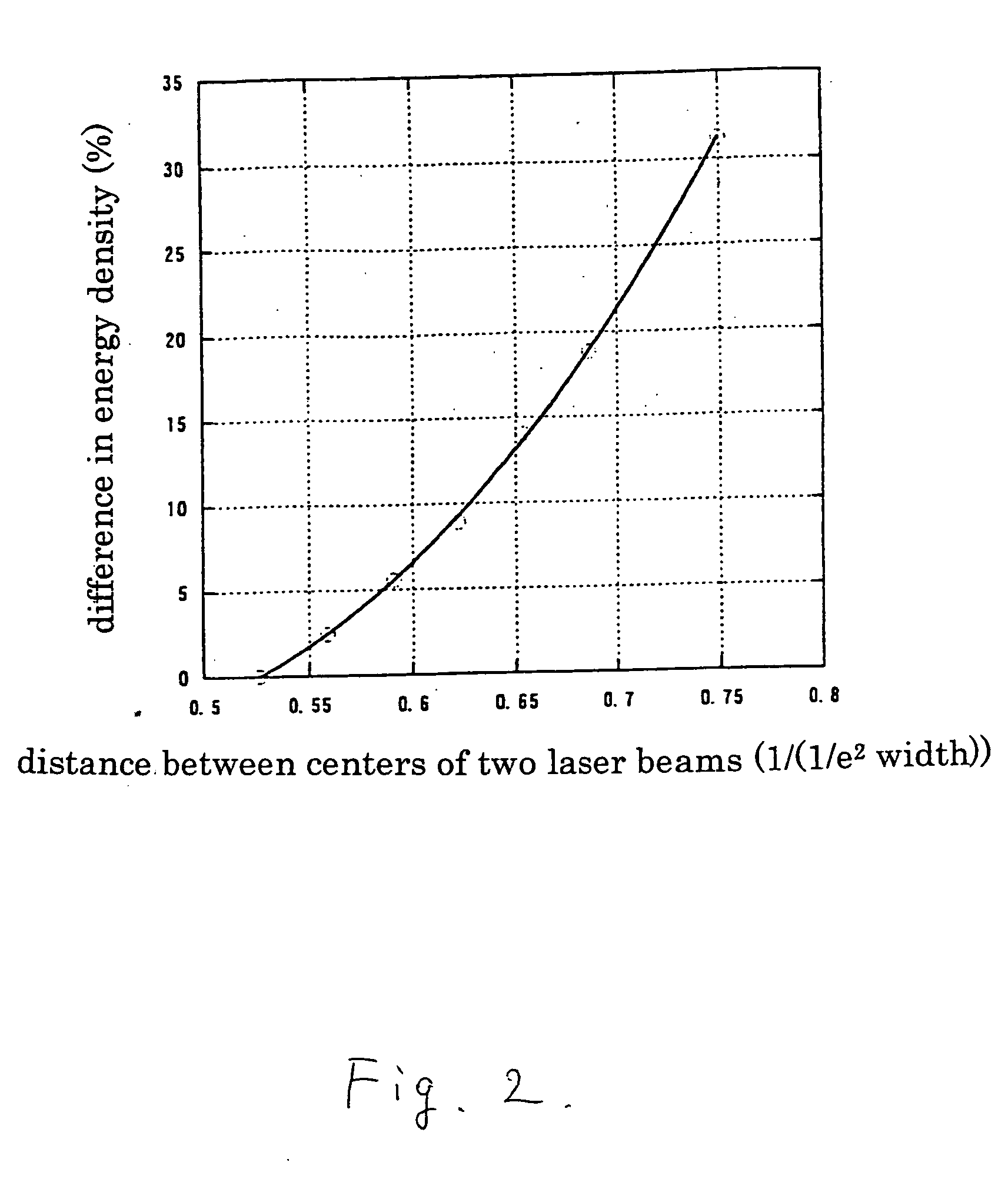Laser beam irradiating apparatus, laser beam irradiating method, and method of manufacturing a semiconductor device
a laser beam irradiation and semiconductor technology, applied in the direction of manufacturing tools, instruments, optical elements, etc., can solve the problems of unsatisfactory irradiation of target objects, increased attenuation, and unwanted variance in a single substrate, so as to improve the durability of flexible substrates, reduce weight, and simple optical systems
- Summary
- Abstract
- Description
- Claims
- Application Information
AI Technical Summary
Benefits of technology
Problems solved by technology
Method used
Image
Examples
first embodiment
[0049] The present embodiment will describe a relation of a distance between laser beams versus the energy density shown in FIG. 1 with reference to FIG. 2, and FIG. 7.
[0050] As shown in FIG. 1, by synthesizing a plurality of laser beams at regions including the attenuated regions, it is possible to achieve uniform irradiation efficiently. Also the energy density suitable to annealing has the upper limit (line α) and the lower limit (line β), and when a difference in energy density falls within this range, uniform annealing can be achieved. However, an example in the drawings shows a case where a difference in energy density is the largest, and in practice, it is preferable to apply annealing under the condition such that reduces a difference in energy density a little. Here, given 1 as the beam width (a half width at 1 / e2) of a laser beam having a Gaussian distribution as the energy density distribution, and 100% as the average value of the peak value and the minimal value somewhe...
second embodiment
[0057] A second embodiment of the invention will now be explained with reference to FIG. 3 and FIG. 4A through FIG. 4C.
[0058] Laser beams emitted from respective lasers 10a through 10d are expanded in the longer direction by their respective convex cylindrical lenses 11a through 11d. Although it is not shown in the drawings, beam collimators for converting laser beams emitted from the respective lasers 10a through 10d into parallel beams or beam expanders for expanding or narrowing laser beams may be provided between the lasers 10a through 10d and the convex cylindrical lenses 11a through 11d. The respective laser beams are reflected by a galvanometer mirror 12 and reach a substrate 13.
[0059] When the laser beams are synthesized at their respective attenuated regions in the longer direction on the substrate 13 in this manner, a long laser beam 17 extending in the longer direction can be obtained, which is able to irradiate a target object in the same manner whether the energy dens...
third embodiment
[0069] The present embodiment will describe an optical system using a polygonal mirror 23 instead of the galvanometer mirror 12 used in the second embodiment above with reference to FIG. 5.
[0070] Laser beams emitted from respective lasers 10a through 10d are expanded in the longer direction by their respective convex cylindrical lenses 11a through 11d. Although it is not shown in the drawing, beam collimators for converting laser beams emitted from the respective lasers 10a through 10d into parallel beams or beam expanders for expanding or narrowing laser beams may be provided between the lasers 10a through 10d and the convex cylindrical lenses 11a through 11d. The respective laser beams are reflected by the polygonal mirror 23 and reach a substrate 13.
[0071] When laser beams are synthesized at their respective attenuated regions in the longer direction on the substrate 13 in this manner, a long laser beam 17 extending in the longer direction can be obtained, which is able to irra...
PUM
| Property | Measurement | Unit |
|---|---|---|
| aspect ratio | aaaaa | aaaaa |
| wavelength | aaaaa | aaaaa |
| transmittance | aaaaa | aaaaa |
Abstract
Description
Claims
Application Information
 Login to View More
Login to View More - R&D
- Intellectual Property
- Life Sciences
- Materials
- Tech Scout
- Unparalleled Data Quality
- Higher Quality Content
- 60% Fewer Hallucinations
Browse by: Latest US Patents, China's latest patents, Technical Efficacy Thesaurus, Application Domain, Technology Topic, Popular Technical Reports.
© 2025 PatSnap. All rights reserved.Legal|Privacy policy|Modern Slavery Act Transparency Statement|Sitemap|About US| Contact US: help@patsnap.com



